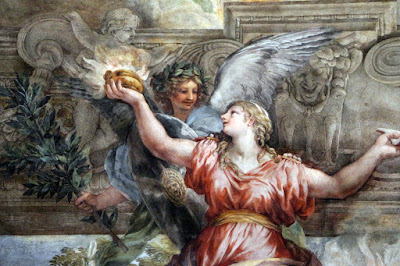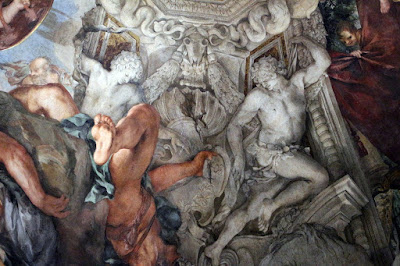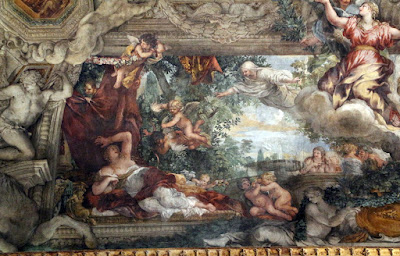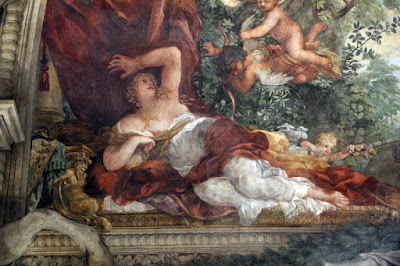 |
| Pietro da Cortona The Triumph of Divine Providence (detail) 1633-39 ceiling fresco Palazzo Barberini, Rome |
 |
| Pietro da Cortona The Triumph of Divine Providence (detail) 1633-39 ceiling fresco Palazzo Barberini, Rome |
 |
| Pietro da Cortona The Triumph of Divine Providence (detail) 1633-39 ceiling fresco Palazzo Barberini, Rome |
 |
| Pietro da Cortona The Triumph of Divine Providence (detail) 1633-39 ceiling fresco Palazzo Barberini, Rome |
 |
| Pietro da Cortona The Triumph of Divine Providence (detail) 1633-39 ceiling fresco Palazzo Barberini, Rome |
 |
| Pietro da Cortona The Triumph of Divine Providence (detail) 1633-39 ceiling fresco Palazzo Barberini, Rome |
 |
| Pietro da Cortona The Triumph of Divine Providence (detail) 1633-39 ceiling fresco Palazzo Barberini, Rome |
 |
| Pietro da Cortona The Triumph of Divine Providence (detail) 1633-39 ceiling fresco Palazzo Barberini, Rome |
 |
| Pietro da Cortona The Triumph of Divine Providence (detail) 1633-39 ceiling fresco Palazzo Barberini, Rome |
 |
| Pietro da Cortona The Triumph of Divine Providence (detail) 1633-39 ceiling fresco Palazzo Barberini, Rome |
 |
| Pietro da Cortona The Triumph of Divine Providence (detail) 1633-39 ceiling fresco Palazzo Barberini, Rome |
 |
| Pietro da Cortona The Triumph of Divine Providence (detail) 1633-39 ceiling fresco Palazzo Barberini, Rome |
 |
| Pietro da Cortona The Triumph of Divine Providence (detail) 1633-39 ceiling fresco Palazzo Barberini, Rome |
 |
| Pietro da Cortona The Triumph of Divine Providence (detail) 1633-39 ceiling fresco Palazzo Barberini, Rome |
 |
| Pietro da Cortona The Triumph of Divine Providence (detail) 1633-39 ceiling fresco Palazzo Barberini, Rome |
 |
| Pietro da Cortona The Triumph of Divine Providence (detail) 1633-39 ceiling fresco Palazzo Barberini, Rome |
"Apprenticed to a mediocre Florentine painter, Pietro da Cortona followed him to Rome in 1612/13. His early studies were mainly of Raphael, and a copy of the latter's Galatea won him the influential patronage of the Sacchetti family from 1623. At the Palazzo Sacchetti he met Cardinal Francesco Barberini, the nephew of Pope Urban VIII, who became his lifelong patron, also establishing contact with the cardinal's learned secretary, Cassiano dal Pozzo. The latter employed him, as he did other young artists, including Poussin, to compile a corpus of ancient works of art remaining in Rome – the source of Pietro da Cortona's antiquarian interests. Fittingly, his most famous pictorial work was executed in the Palazzo Barberini, 1633-39; the ceiling decoration of the Gran Salone, a landmark of Baroque ceiling painting. This famous fresco combines, in a wonderfully exuberant yet disciplined whole, several traditions of illusionistic vault and ceiling painting."
– from the Yale Dictionary of Art and Artists by Erika Langmuir and Norbert Lynton (2000)